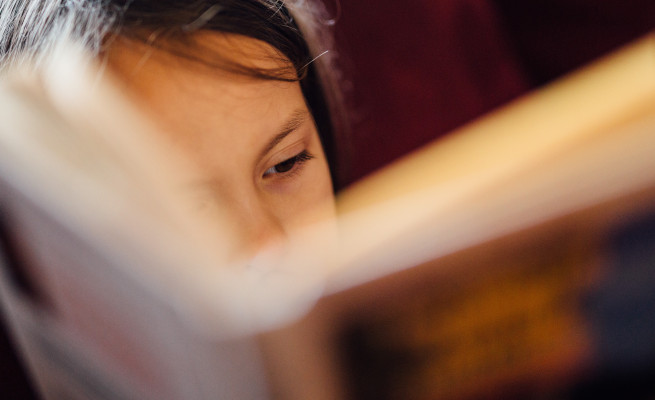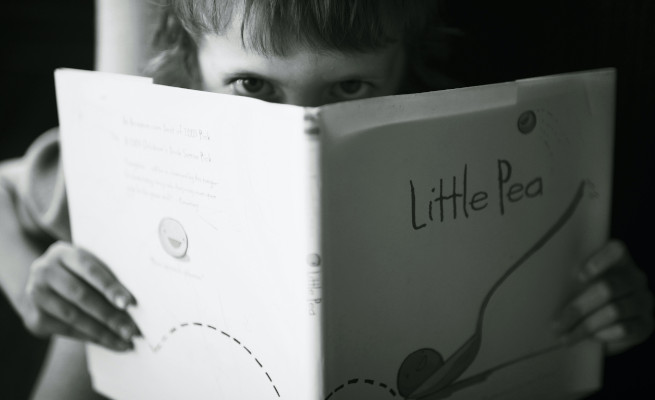Learning to read can be a challenge for many kids, but thankfully there are many methods that can be used to help this process along.
One of the most widely used teaching methods is the use of high frequency word lists.
So what are they exactly?
While there are several different lists in use across different countries and school systems, the principle remains the same – have a child learn lists of the most commonly used words in the English language.
In some systems, these high frequency word lists gradually increase in difficulty – where as others simply arrange in order of most commonly used (which often are indeed the simplest of words).
Either way the end result is the child being able to immediately know the majority of basic words on sight in a written passage, which leaves them free to devote more thought to learning the remaining more difficult words.
So let’s look at this concept in more detail, and I’ll share with your some of the techniques that have been most effective in my classroom…
What are high frequency words?
Essentially these are the most commonly used words in English.
Several researchers in different countries around the world have settled upon slightly different variations of word lists, though there is obviously a lot of crossover.
The words are broken out into short word lists to be tackled one by one, moving onto the the next once the current one is mastered.
The end result is that the child will know most simple words in written material, and will have a much easier time decoding text. A big part of this is that they’ll be able to give more of their attention to the few remaining more difficult words.

What are high frequency word lists?
As mentioned above, different school systems around the world use a variety of different high frequency word (HFW) lists.
Some great examples are the Dolch sight words and the Fry word list widely used in the US and elsewhere – and the Essential Word List used in NZ.
Children can gradually be given progressive lists of words, which combine to form a large number of words that they can immediately recognize.
Children learn the words off by heart, and following this whenever they see the word they know it right away, and can grapple with any remaining words they’ve not encountered before.
How to teach high frequency words?
Given the word list format, this is well suited to a whole range of different teaching methods that are quite simple to get underway.
Here are some of the methods I’ve used to teach my classes their high frequency words:
- Printable Flashcards
- Making the words with magnetic letters
- Making the words out of playdough
- Letter tiles
- iPad app that flashes words across the screen
- High frequency word songs
- Poems or short texts where they can highlight the high frequency words
- Word Searches containing only high frequency words
- Have them on display on the wall.
- I had them displayed in their colors e.g. magenta words then red etc. Kids liked to be able to see where they were heading next. (This relates to the Essential Word list levels in NZ schools)

What are the main benefits of a child learning high frequency words?
The main benefit as we have covered is the instant recall of commonly used words.
When children are reading text they can easily identify these words.
They can then much more easily learn how to spell them, and this in turn leads to the words being used in the child’s written work such as stories.
We take it for granted that we automatically identify the vast majority of words we see as established readers – but think for a moment about needing to study every single word in a simple sentence just to grasp what is being said.
By making all of these commonly used words easily recognizable, we’re giving our children a big helping hand, and freeing up their mind to concentrate on the remaining new words, grammar, punctuation – and the meaning of the sentences.
How do you assess whether the child knows their high frequency words?
One technique that has worked really well in my classes is flashcard testing.
This lets me quickly go through a list of words with a child, and sort them into two resulting piles – one pile for words they know and one for those they are obviously still learning.
From there I keep a historical checklist for each child’s progress until they are ready to move up to the next list to be attempted.
I usually aim to test my target kids once a week. (They loved to try and beat their score each week too!)
I’ve also used reward points as a strategy – which definitely got the kids onboard! Let those points start racking up and build those associations between making progress with fun rewards, it’s always a winner.
And then beyond these times where we are obviously assessing their progress, I like to also use reading observation – if they’re reading back sections of their book to me, can they read or pick out the words?

Should they be taught individually or to a class?
I’ve primarily used reading groups.
This ensures I have small groups of similarly knowledgeable students that I can go into the appropriate level of detail with, and at the right speed.
I’ve also worked with a specific target group – kids that need that focused attention to make the connections that they’re needing to.
This group of children have their own flashcards and notebook just for this practice.
They will write the words, say them and then make them – with plastic letters, or even play dough. Sometimes just having this tactile involvement is enough to help make things stick.
They take their cards home to work on their word lists with their parents.
I keep a checklist and test each week, recording the resulting score. The children are always keen to improve their score each time.
And while it might not be the first thing to jump to mind, in fact I’ve found using High Frequency Word songs on YouTube to involve the whole class has been useful as an occasional treat, and has helped keep things upbeat.
Activities are always a winner with the kids, and these often come back to high frequency word match games, having the kids who get a word match then write it on the whiteboard.
Getting back to basics with a playdough mat and spelling out the high frequency words on the floor always gets the energy levels up in the class too.
What age groups are high frequency words useful for?
There’s no question that usually new entrant & kindergarten through to year 2 / grade 1 benefit the most, as they are learning to read and decode at these levels.
They can certainly be involved over later years as well however, particularly to help bolster the reading or writing ability of older students who are finding it more difficult to improve their skills.
High frequency word lists
Dolch Sight Words – view the list here on Wikipedia
Fry word list
NZ Essential Words List – view a PDF

